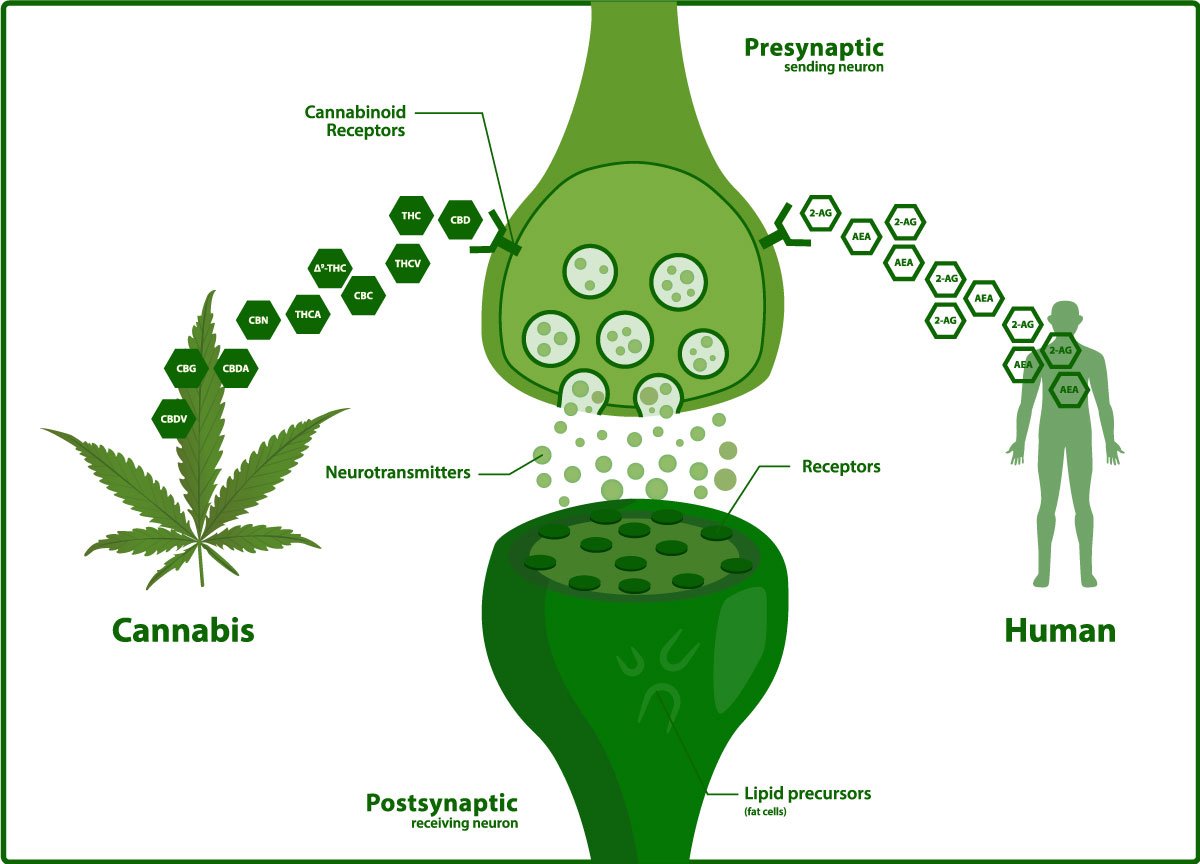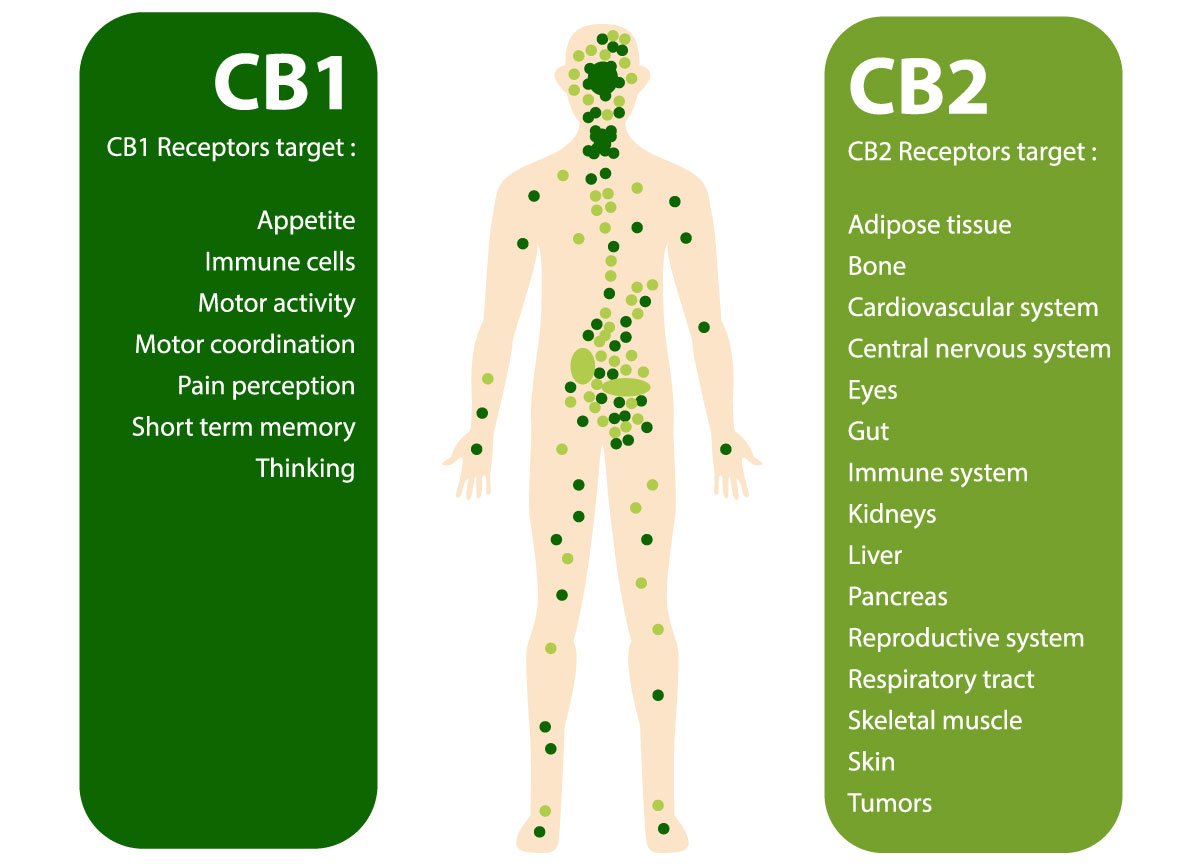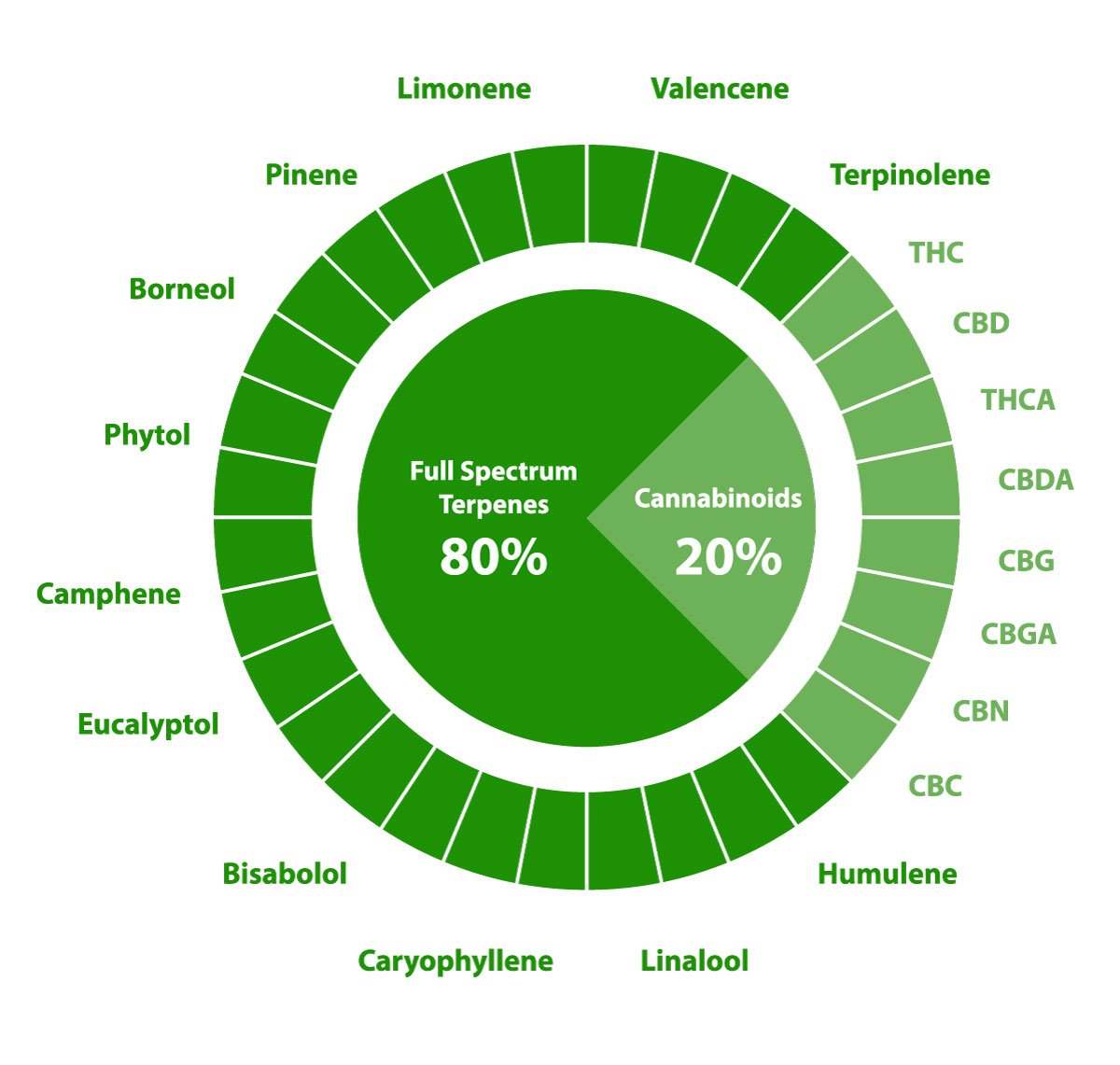How do cannabis products affect the human body?
In order to answer this question, we must first understand cannabinoids, the endocannabinoid system, and terpenes.
What are cannabinoids?
Cannabinoids are chemical compounds found in the cannabis plant. THC, CBD, CBN, CBC, CBG, and THCa are the most commonly sought-after cannabinoids. There are over 100 unique active cannabinoids known to exist in the cannabis plant. Cannabinoids produce their effects by interacting with specific receptors, located within different parts of the central nervous system.


What is the endocannabinoid system (ECS)?
The endocannabinoid system exists within the human body, and all vertebrates, to receive, produce, and monitor/control the body’s distribution of two cannabinoid types: Endocannabinoids and Phytocannabinoids. Endocannabinoids are produced by the human body, and Phytocannabinoids are produced by the cannabis plant. The purpose of the ECS is to maintain homeostasis, or balance and evenness, of the brain and body.
What are terpenes?
Terpenes are the essential oils of a plant. There are over 20,000 known terpenes, over 100 of which can be found in the cannabis plant. Terpenes found in cannabis are not unique to the plant and can be found in other plant life such as oranges or pine trees. These are what give cannabis its unique aroma. Studies indicate that terpenes are part of the “entourage effect,” working together with cannabinoids to increase potential therapeutic effects. Terpenes degrade over time when exposed to direct sunlight, air, and heat.


